

Armenia is a mountainous country with elevations above sea level ranging from 379m (Araks River valley in Syunik province) to 4.090m (summit of Aragats Mt), and it combines elements of three geo-botanical regions: Caucasian, Iranian and Eastern Mediterranean. The country's geographical position and complex geomorphology resulted in variety of landscapes and habitats such as rocky semi-deserts, arid mountain steppes, open juniper forest, montane broadleaf forest, subalpine and alpine meadows. Rock outcrops and massifs are abundant and encountered in various habitats. Armenia also has numerous natural freshwater lakes and reservoirs (with Sevan being the largest freshwater lake in the entire Caucasus), rivers running down the mountain gorges, and a large network of artificial wetlands and reservoirs.
Diverse natural conditions results in unusually rich flora and fauna on a relatively small territory of the country. Up to the present over 350 bird species have been recorded in Armenia, of which over 240 species are breeding in the country. Armenia is home to many Middle Eastern and Caucasian specialties including endemics, while many of European bird species are represented here by local subspecies. These include Caspian Snowcock, Caucasian Grouse, Armenian Gull, Radde's Accentor, Red-tailed Wheatear, Semi-collared Flycatcher, Pygmy Cormorant, Marbled, Ferruginous and White-headed Ducks, White-tailed Plover, an excellent selection of breeding raptors, Blue-cheeked Bee-eater, Bimaculated Lark, White-throated Robin, Finch's Wheatear, Menetries's, Upcher's and Green Warblers, Eastern and Western Rock Nuthatches, Wallcreeper, Grey-necked Bunting, Pale Rockfinch, Red-fronted Serin, Crimson-winged and Trumpeter Finches.
Situated on an important migration flyway Armenia offers superb opportunity to see, among many others, such species as Demoiselle Crane, Black-winged Pratincole, Broad-billed, Terek and Marsh Sandpipers, Greater Black-headed Gull, Calandra Lark, Moustached Warbler, and spectacular migration of eagles, harriers and buzzards.
Scenic landscapes, hospitality of local people, numerous medieval monasteries and other historical and prehistoric monuments, healthy Armenian cuisine and rich Flora and Fauna - all this makes Armenia a rewarding destination for every birdwatcher and nature lover.
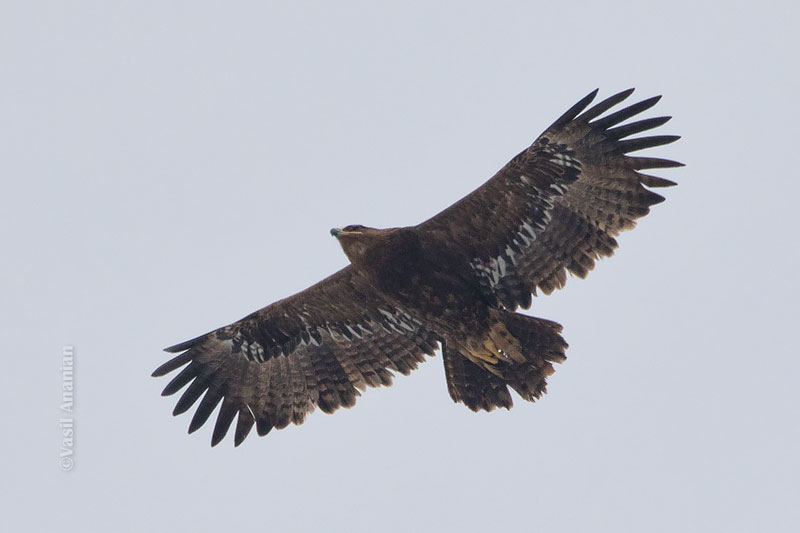
Steppe Eagle - although globally threatened and classified as Endangered according to IUCN criteria, this is still a relatively common passage migrant in Armenia.

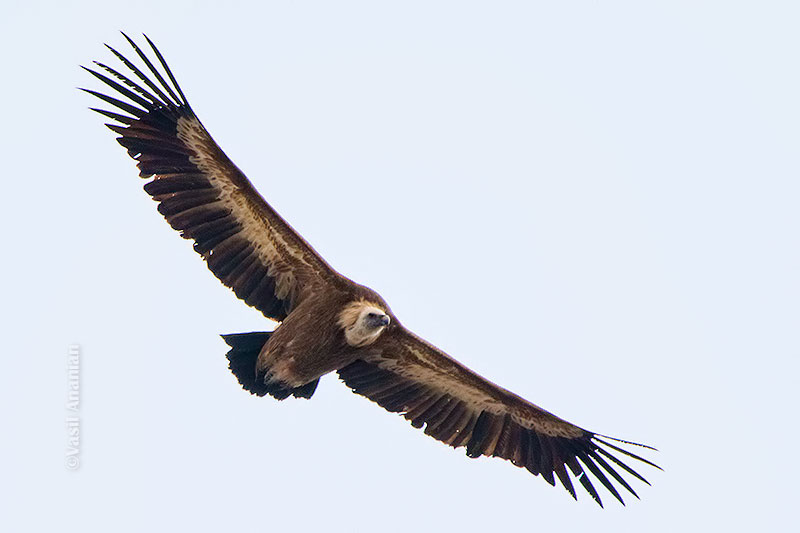
Eurasian Griffon is commonly seen in all parts of Armenia, but everywhere in small numbers.

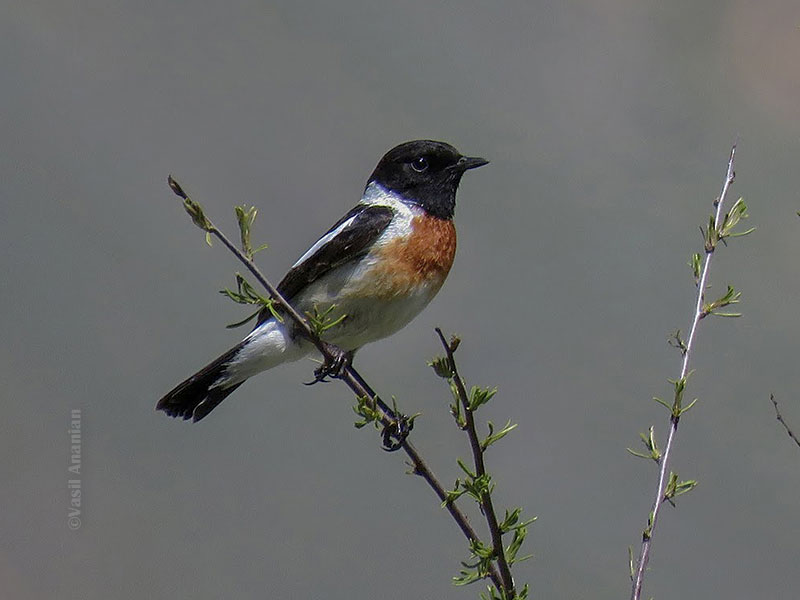
The 'Armenian' Stonechat male at its breeding grounds in Vayots Dzor, Armenia. This is the largest of three stonechat forms occurring in the Caucasus.

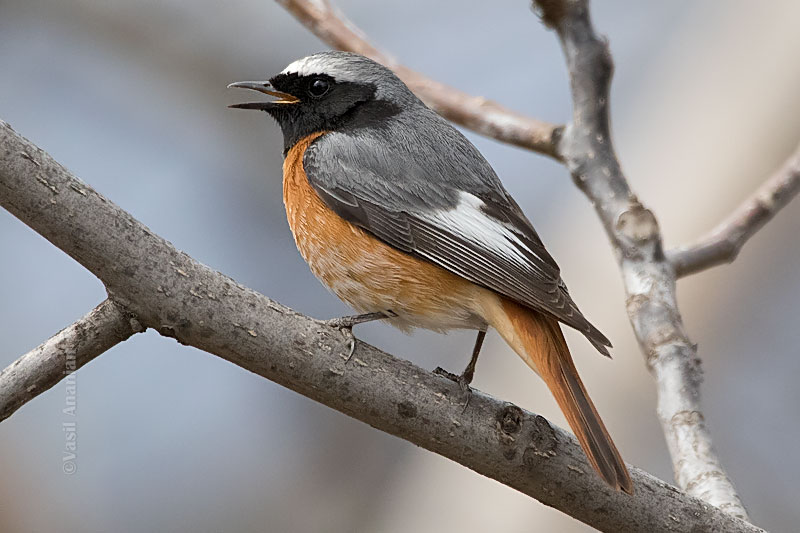
A male Common Redstart of the race samamisicus showing the diagnostic white wing panel.

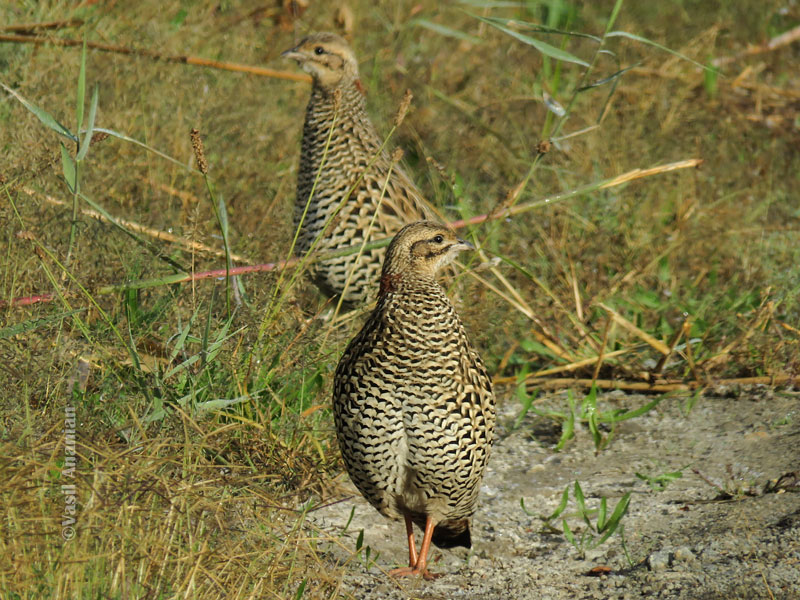
This bird occurs only in dry subtropics of extreme south-east of Armenia on a border with Iran.
The species' population seems to do very well and it's is observed and heard on almost every visit to Arevik National Park.

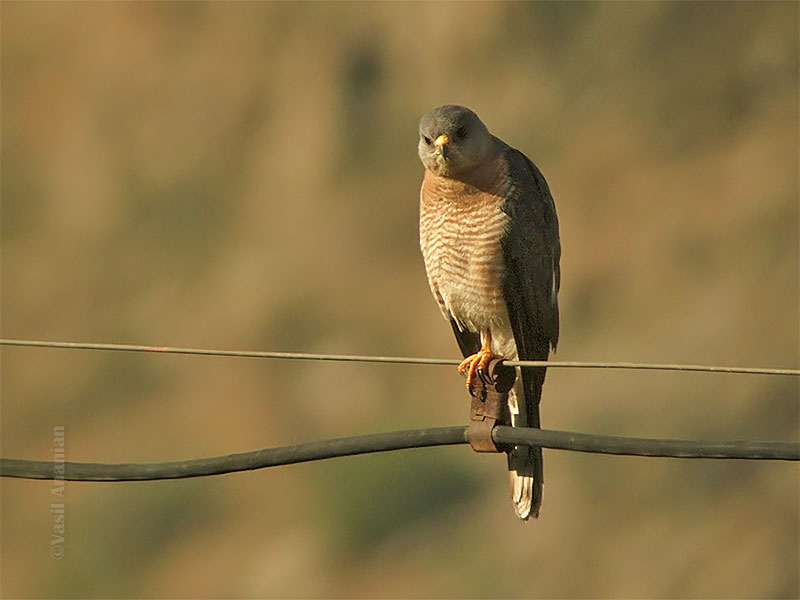
A very good selection of raptors seen on a standard spring-summer birding tour to Armenia. But only one of them breeds almost exclusively in and around human settlements - in villages, towns and even public parks of Yerevan city.

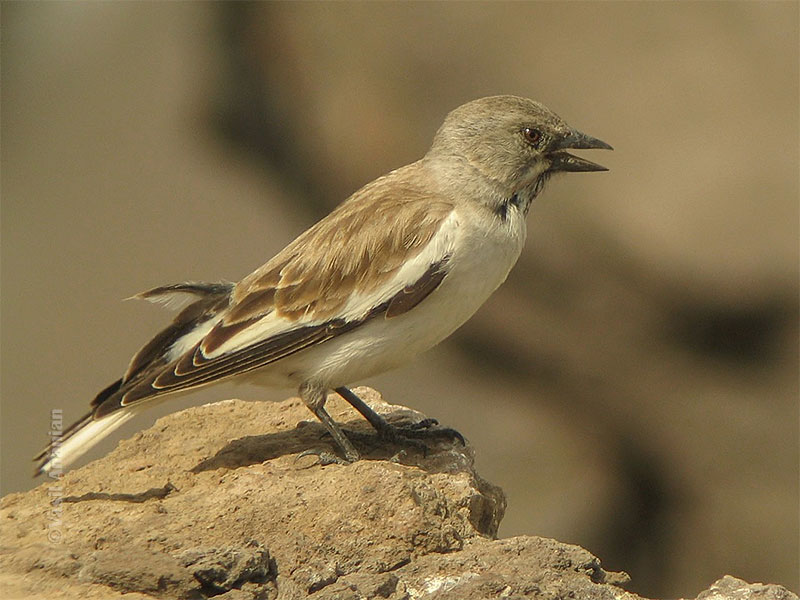
Deserves its name and most of the time seen with at least some snow around...

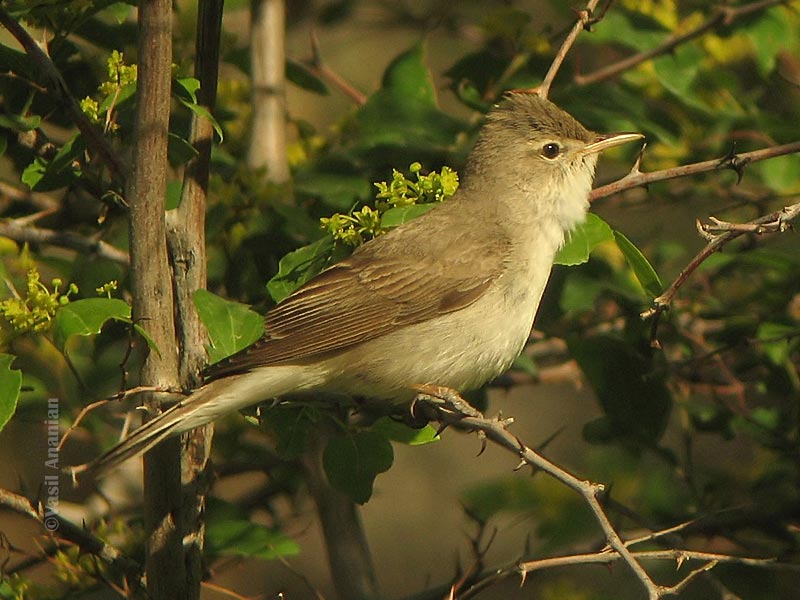
Another bird with restricted range in the Western Palearctic, where it breeds only in the south-eastern corner of the region.
In spring Upcher's Warbler arrives relatively late, from mid-May onward, but then it is easily found in dry gorges and mountain foothills, thanks to its distinct repetitive song and characteristic flight from bush to bush.

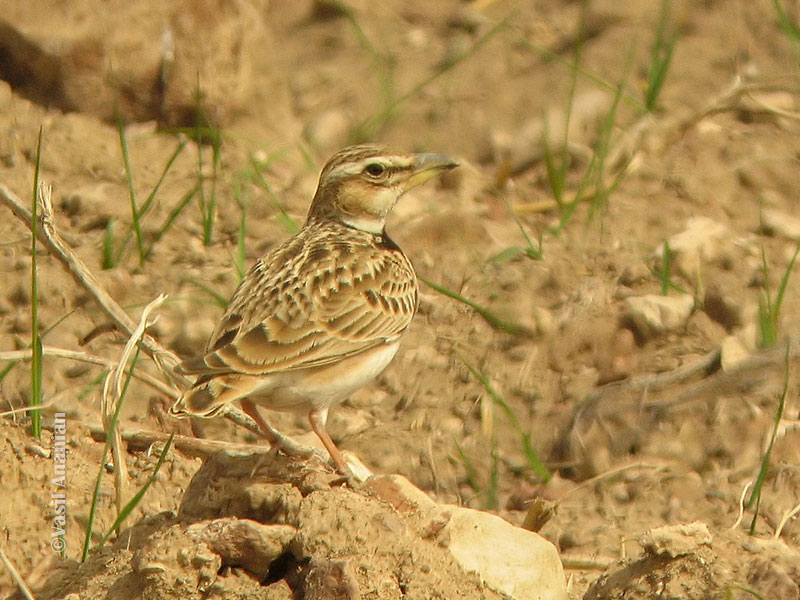
In breeding season this lark is usually easily detected by its loud and unmistakable song audible at long distance. In contrast, locating a bird singing somewhere high in the sky is not a straightforward task, while finding a landed bird is sometimes even more complicated because of its perfect blend with the habitat.

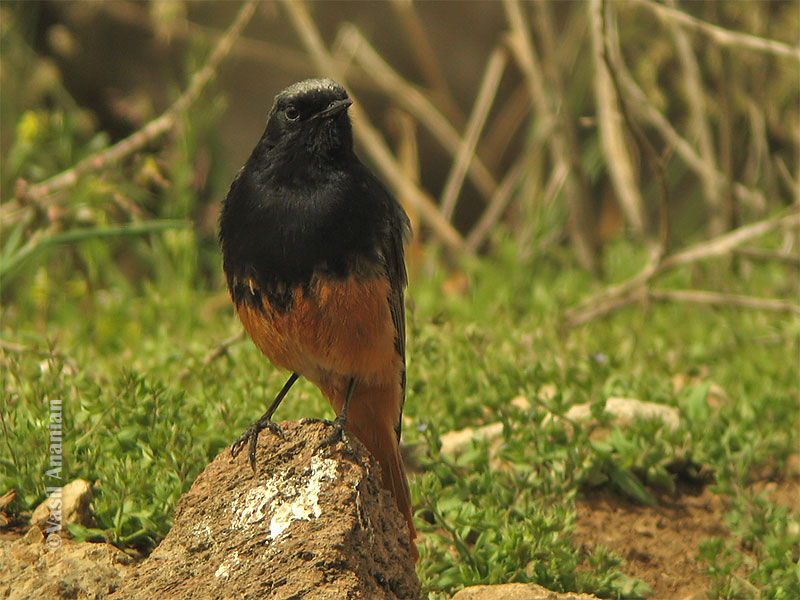
General fieldguides to WP birds traditionally depict 'semirufus' race of the Black Redstart which has a tiny range in the Levant, but do not usually cover the quite similar variant of the closely related and highly variable nominate 'ochruros', which is found all over the Caucasus, NW Iran and E & C Turkey.
Surely this kind of nominate birds involved in most (if not all) of the cases with the 'semirufus' reports from the Caucasus.

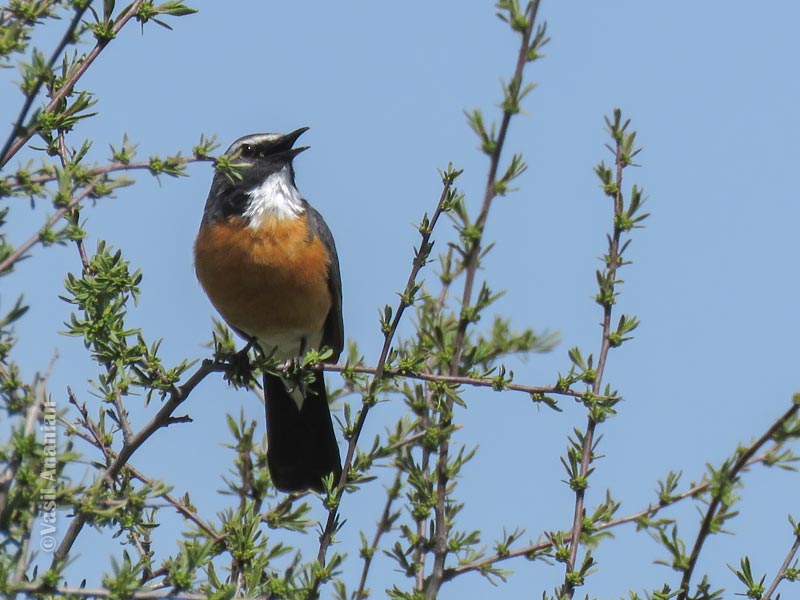
Every birder visiting Armenia for a spring-summer tour, will surely have the White-throated Robin on his/her priority list.
Although secretive, this species is easily observed in various habitats and at various elevations throughout western and southern Armenia.

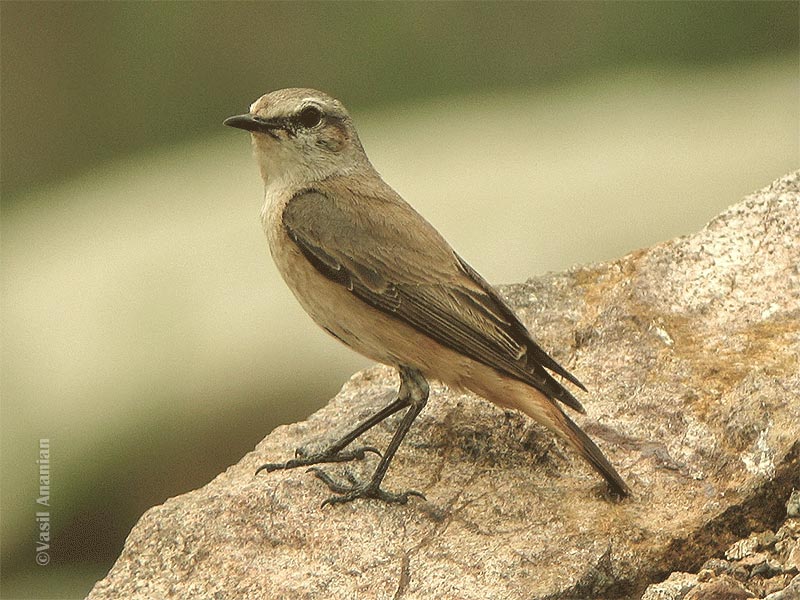
In Armenia, this species was known only from the country's extreme SE, on a border with Iran. But since the last 15 or so years the bird is expanding its range northward, and is now found closer to Yerevan in Ararat and Vayots Dzor provinces, thus becoming more accessible for visiting birders.

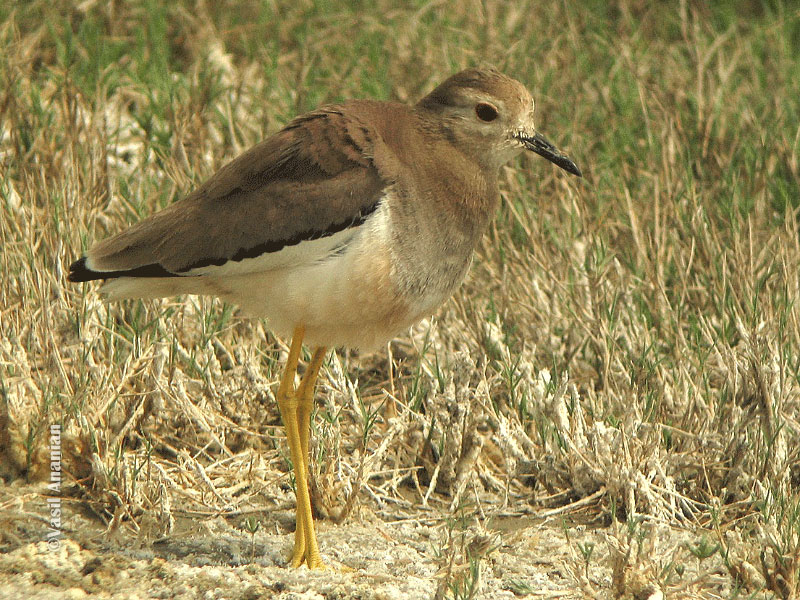
The White-tailed Lapwing was first spotted in Armenia in May 1989, but only a decade later the species reappeared at the same site, when several apparently breeding pairs were found and provided great views to participants of the very first BirdingArmenia tour. Soon afterwards their breeding here was proven, and since then small number of the lapwing is breeding in the country annually. The species in Armenia confined to a very small area in the Ararat Plain, where it occupies remaining patches of saline mudflats in fishfarms. The White-tailed Lapwing is Nationally Redlisted in Armenia.

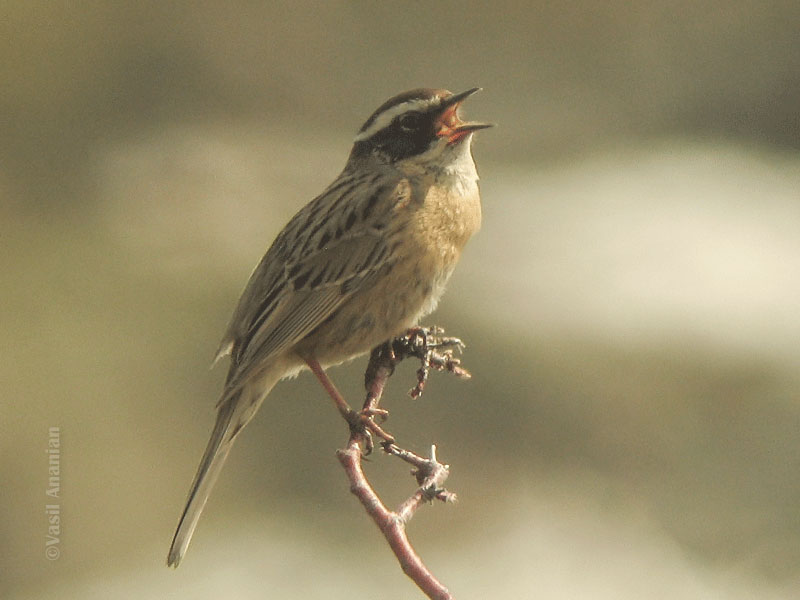
Radde's Accentor has very limited range in the Western Palearctic. In Armenia, the species is found on most of the mountain ranges and upland plateaus, where it prefers gorges and slopes with abundance of rock and shrub.
By word of many visiting birders, Armenia is the easiest place in the WP, where you can see Radde's Accentor with minimal effort. In fact, the species habitats are accessible within half an hour drive from the capital city, on the slopes of Mount Aragats - a popular destination among birders for more than two decades now...